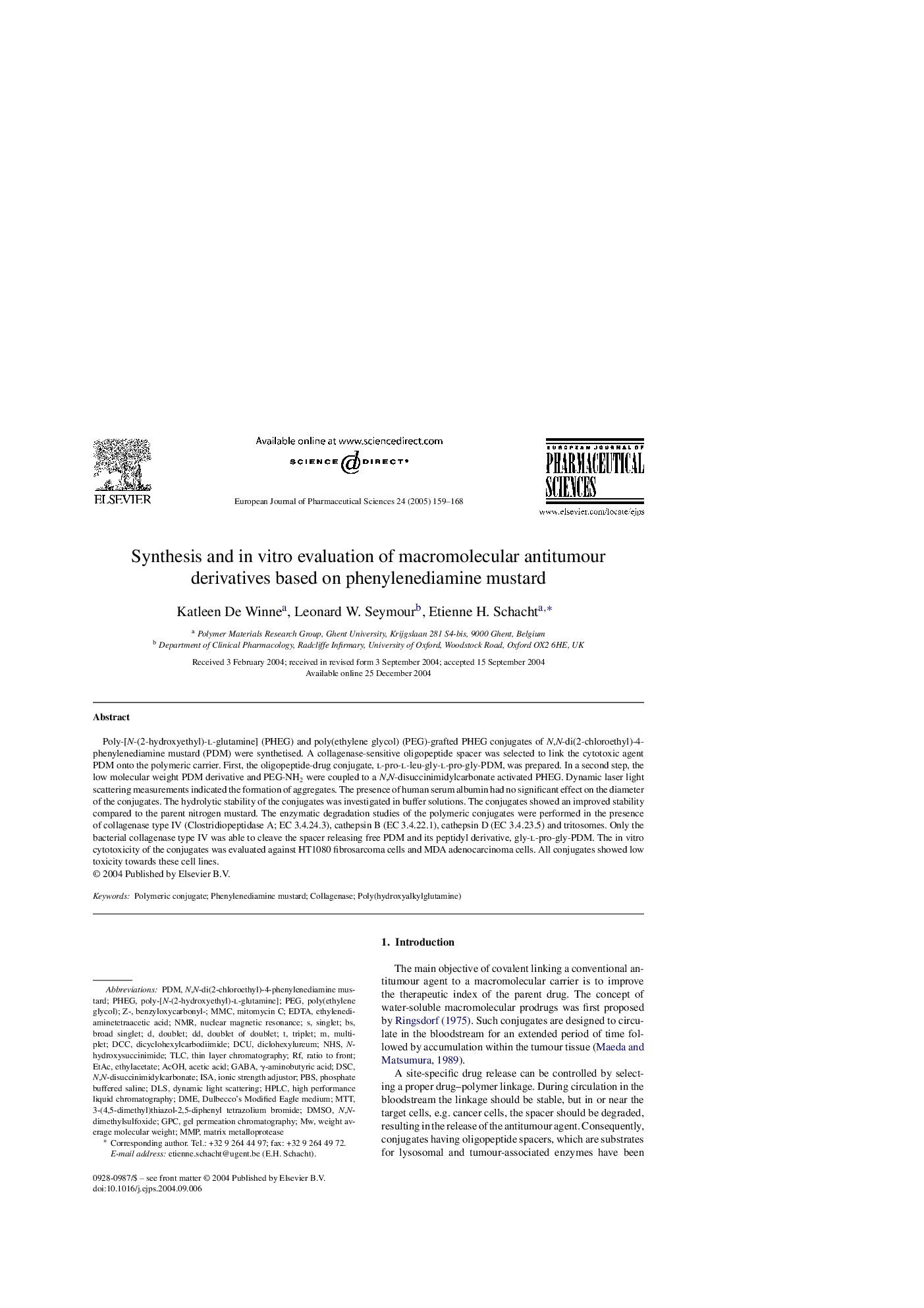| Article ID | Journal | Published Year | Pages | File Type |
|---|---|---|---|---|
| 9917760 | European Journal of Pharmaceutical Sciences | 2005 | 10 Pages |
Abstract
Poly-[N-(2-hydroxyethyl)-l-glutamine] (PHEG) and poly(ethylene glycol) (PEG)-grafted PHEG conjugates of N,N-di(2-chloroethyl)-4-phenylenediamine mustard (PDM) were synthetised. A collagenase-sensitive oligopeptide spacer was selected to link the cytotoxic agent PDM onto the polymeric carrier. First, the oligopeptide-drug conjugate, l-pro-l-leu-gly-l-pro-gly-PDM, was prepared. In a second step, the low molecular weight PDM derivative and PEG-NH2 were coupled to a N,N-disuccinimidylcarbonate activated PHEG. Dynamic laser light scattering measurements indicated the formation of aggregates. The presence of human serum albumin had no significant effect on the diameter of the conjugates. The hydrolytic stability of the conjugates was investigated in buffer solutions. The conjugates showed an improved stability compared to the parent nitrogen mustard. The enzymatic degradation studies of the polymeric conjugates were performed in the presence of collagenase type IV (Clostridiopeptidase A; EC 3.4.24.3), cathepsin B (EC 3.4.22.1), cathepsin D (EC 3.4.23.5) and tritosomes. Only the bacterial collagenase type IV was able to cleave the spacer releasing free PDM and its peptidyl derivative, gly-l-pro-gly-PDM. The in vitro cytotoxicity of the conjugates was evaluated against HT1080 fibrosarcoma cells and MDA adenocarcinoma cells. All conjugates showed low toxicity towards these cell lines.
Keywords
DMEGPCAcOHDSCNHSTLCDCCMMCMitomycin CPDMN-hydroxysuccinimidedicyclohexylcarbodiimideEtAcPBSDCUMMPPHEGDLSnuclear magnetic resonanceDMSODulbecco’s modified Eagle mediumMTTEthylacetateEDTAEthylenediaminetetraacetic acidγ-aminobutyric acidAcetic acidbenzyloxycarbonyl-NMRbroad singletDoubletTripletPhosphate buffered salineMatrix metalloproteaseISAWeight average molecular weightDynamic Light ScatteringPoly(ethylene glycol)PEGmultipletthin layer chromatographyhigh performance liquid chromatographyHPLCGel permeation chromatographycollagenaseGABASinglet
Related Topics
Health Sciences
Pharmacology, Toxicology and Pharmaceutical Science
Drug Discovery
Authors
Katleen De Winne, Leonard W. Seymour, Etienne H. Schacht,
